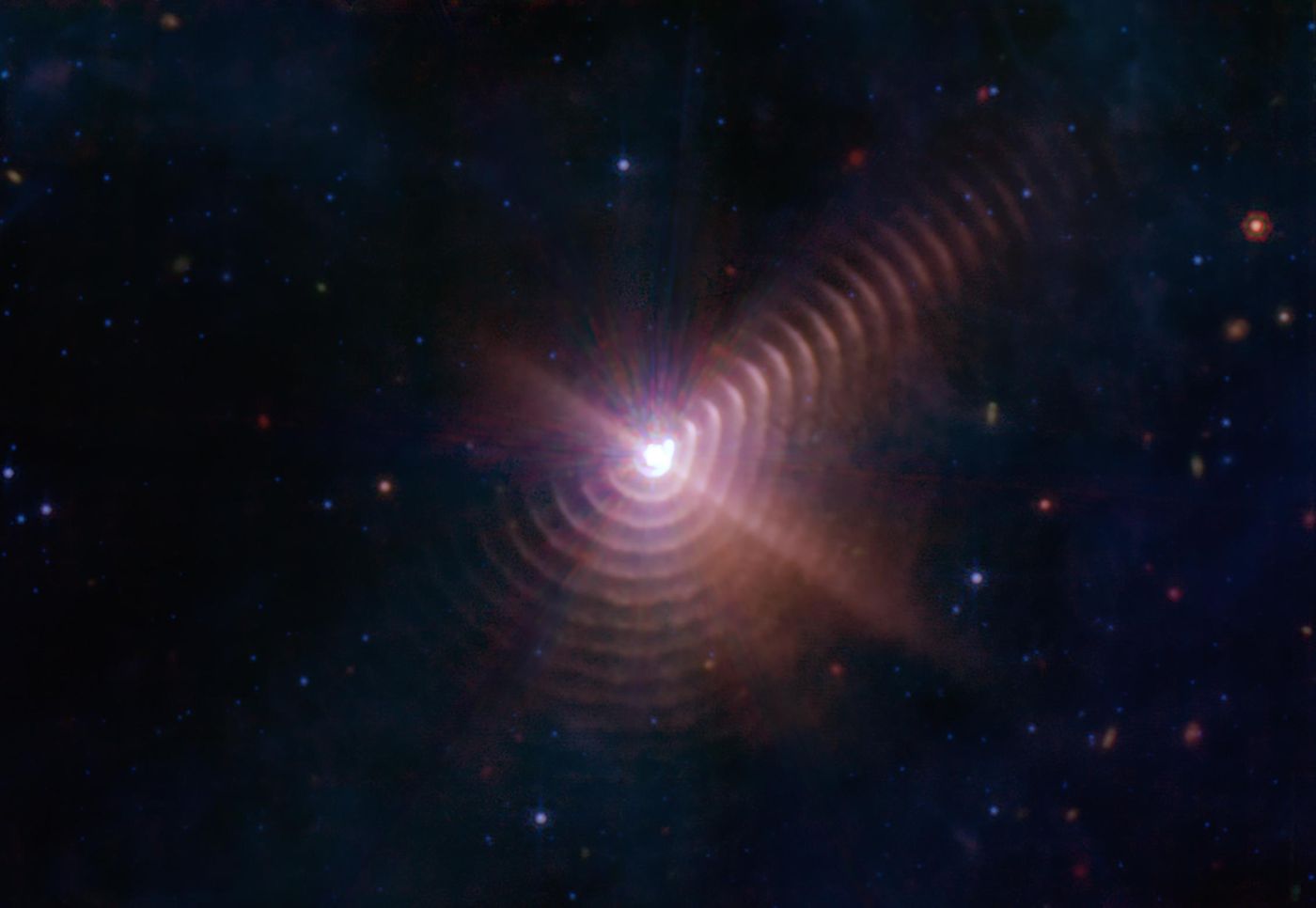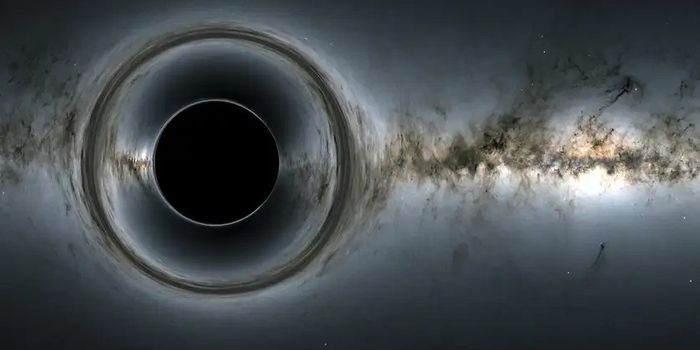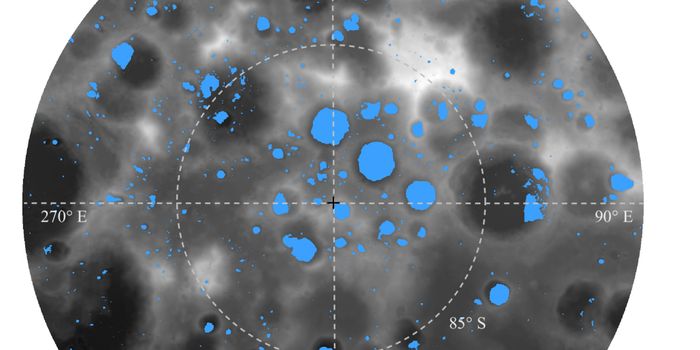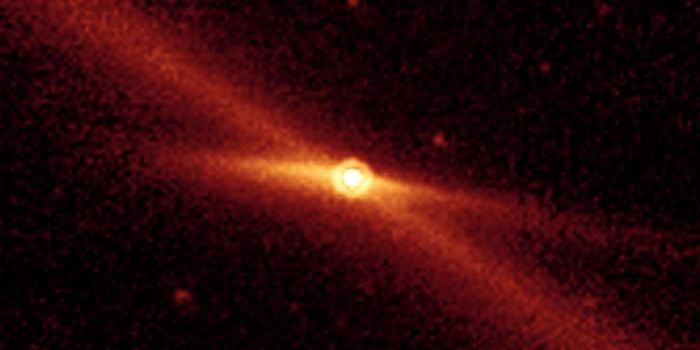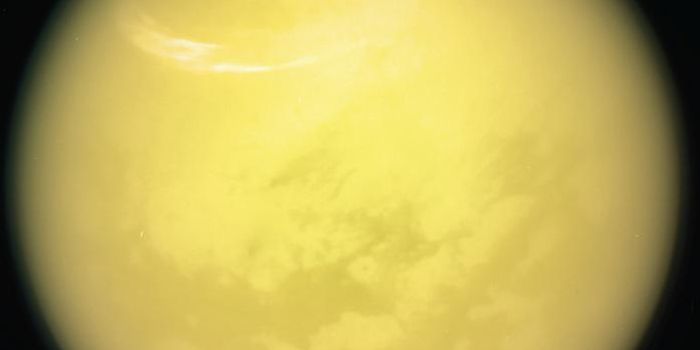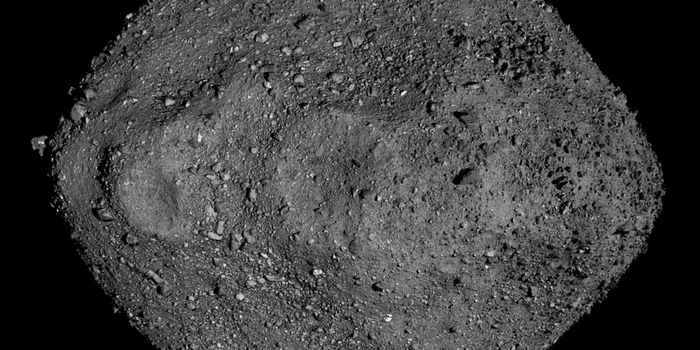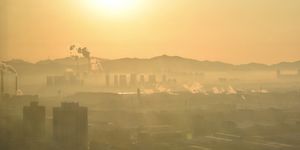Binary Pair of Stars Creates "Fingerprint" in Space
A new paper published in Nature Astronomy includes a new image from NASA’s James Webb Space Telescope (JWST) that reveals at least 17 dust shells that were created by a rare type of star and its companion. The image shows over a century of dust production from this star system and highlights the capabilities and sensitivity of JWST. For comparison, in former images taken with ground-based telescopes, astronomers were only ever able to observe 2 dust shells.
The dust shells in the image were created by a pair of stars – otherwise known as a binary system – known as Wolf-Rayet 140. This pair of stars is located over 5,000 light-years from Earth and is composed of a Wolf-Rayet star and an O-type star. An O-type star is a normal, but very hot and very massive star – born with at least 25 times more mass than the Sun, while a Wolf-Rayet star is a massive star nearing the end of its life. A Wolf-Rayet star is thought to have descended from an O-type star, but is losing mass at a very high rate. Both of these types of stars generate powerful stellar winds, which can blow off material from the stars themselves and push surrounding material away and off into space. The Wolf-Rayet star in this pair has probably shed more than half its original mass already!
Each shell of dust observed was created when the stars in the binary pair came close together in their orbit. The unique pattern seen in the image originates from the shape of the orbit for Wolf-Rayet 140. The orbit of this pair is elongated (or elliptical), not circular. This means that the stars are closest to each other once every 8 years. Both stars in the pair are continuously shedding mass and that mass is carried away as streams of gas blown into space by their stellar winds. When these winds meet, the gas is compressed, and dust is formed.
Source: Jet Propulsion Laboratory
